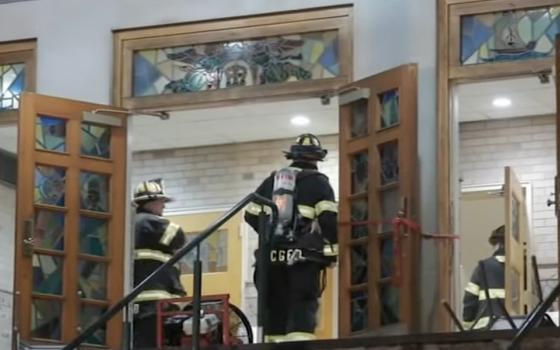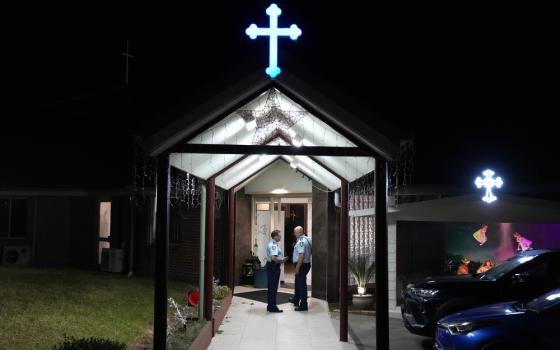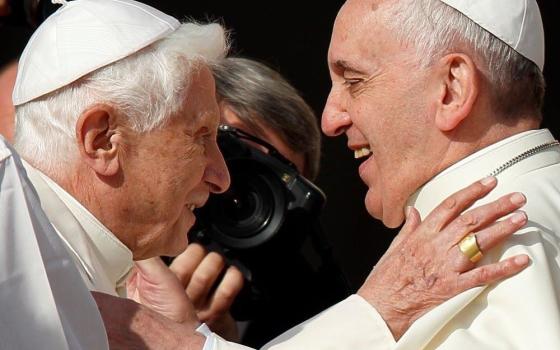
VIEWPOINT
The year I turned 50, I began ballet.
I hadn’t planned it, hadn’t decided, “Landmark age! Do something new!” My classes evolved, as does so much of what I do, from one of my children’s activities. Because of years spent watching swim lessons and team workouts, I learned to swim laps. Because my then high-school-age son, fascinated with theater, told me his regional company needed a new play, I wrote my first script, which won a prize and a summer production, but that’s another story.
Ballet is most definitely not in my background. Or anything else athletic. I grew up in a time and place where girls’ sports mostly meant cheerleading. And to my mother -- raised in a small Baptist town where drinking, cards and dancing were frowned upon -- “ballet” meant tap or baton (as in “twirling”) while wearing the skimpiest of spangled costumes and the tackiest of fake smiles. We didn’t do such things -- just as we didn’t wear scarlet nail polish and red lipstick or snap chewing gum with our mouths open. Or associate with girls who did.
Fast-forward a few decades, and I am driving my sometimes purple-nailed daughter four days a week to her ballet studio in our closest city, 50 miles away. Like parents who stray back into the church because they want their children baptized, I crept into that special world, one that, like the church, possesses its own language, discipline, grace. Each week, I take two classes for adult beginners -- though I am by far the most adult in them, and it remains a question which will happen first, achieving a pirouette where I don’t fall over, or abandoning the attempt because of arthritis.
I’ve learned a new language, one I can now pronounce, if not always spell. Ballet developed in France, and French remains its universal tongue. I’m indoctrinated: I can obey phrases like port de bras and en dedans.
I’ve also learned that we may think of dance as an art form, but it is equally an athletic event, a fact Gatorade recognized last summer when they featured “So You Think You Can Dance” winner Lauren Froderman on their first dancer-athlete bottle. Dance takes as much strength and stamina as any other sport. “More,” I argue regularly with my varsity swimmer son. “Look at a professional dancer’s leg muscles. Rock solid.” Ditto arms, ditto abs. “No wonder those ancient Spartans” (my son is a military history buff) “included dance as part of their battle training.”
But the dancer has the extra burden of making it look like it all just kind of happens, with no apparent effort. A dancer must have amazing muscles, but they aren’t allowed to bulge. A dancer must maintain the illusion of ease, of airiness even. In ballet, no one sweats or grimaces or pants: Indeed, because of the incredible strength and discipline of their core muscles, dancers scarcely seem to breathe. Ballet seems all grace and flow.
Which it can do because a dancer works from her core, those powerful center muscles of the body that the rest of us mostly just let hang out. With such a strong center, a dancer’s arms and legs can appear to float through the air.
I will never come close to that kind of dancing. For me, it was an achievement when I managed to stay on demi-pointe in retiree (translation: balanced on one bent toe with the other leg bent and its pointed toe resting above the knee of the standing leg). I’d even let go of the barre to arch my arms in that ballerina half-circle overhead. Exultant. Until my teacher yelled, “Margaret! It’s not your arms’ job to hold you up!” and proceeded to use me as an example of how not to balance. That is, with gritted teeth, tensed shoulders, held breath, and arms locked in place as though gripping the air.
“You have to find your core,” she said, poking my middle. “Use those muscles. That’s where the power is. That’s what holds you up.”
And for a split second, I could feel those muscles, work them. My neck and shoulders relaxed. Freed from doing what they weren’t meant to do, my arms felt like they could float. I breathed. For that wonderful moment, I got it: Dancers appear ethereal because they hold themselves from their core. I felt the meaning behind the words. Port de bras. Carriage of the arms.
For that moment, I sensed what grace might feel like. Physical grace, I mean.
But it’s surely the same with God’s grace. Always within us, but not always felt, unless we learn to live from our spiritual core, true powerhouse of our being. Unless we train ourselves to rely on the strength of God instead of our tensed muscles, clenched teeth, I-can-do-it-myself determination.
We fling the words around: God’s grace. But do we live like we feel it? I think more often we forget what it feels like to let God hold us up. Which leaves my life, at any rate, ever more frenzied, stressful, outwardly graceless, as I metaphorically strain and clutch and claw to stay upright.
I think that if I can train myself to seek the strength of my true core, discipline myself to quit gripping with the wrong muscles, my life might feel, if only for a few precious moments, as effortless as that ballerina wafting across the stage. I might feel the grace I already have.
[Margaret Stephens is a novelist and playwright. She lives in rural Tennessee.]



